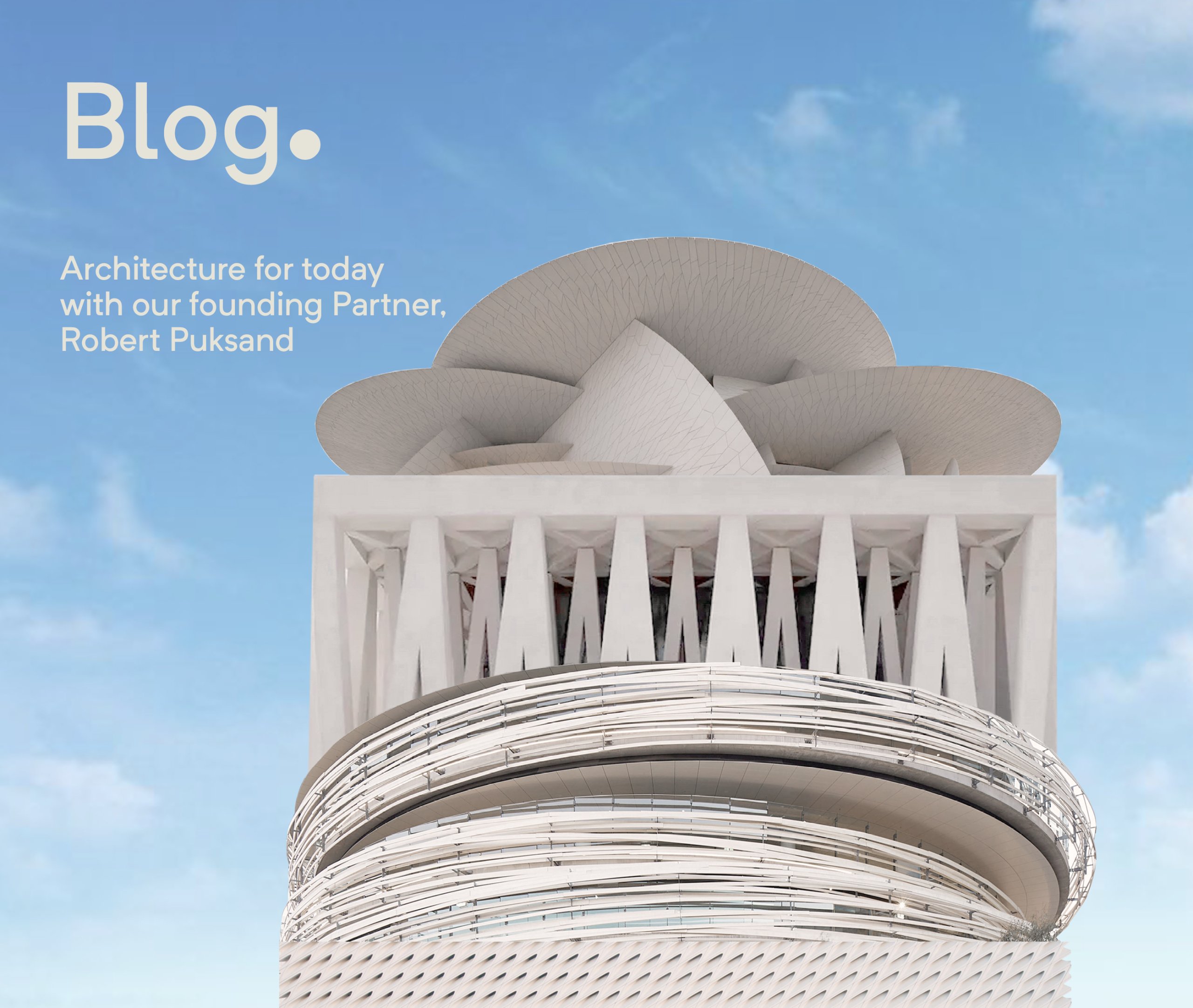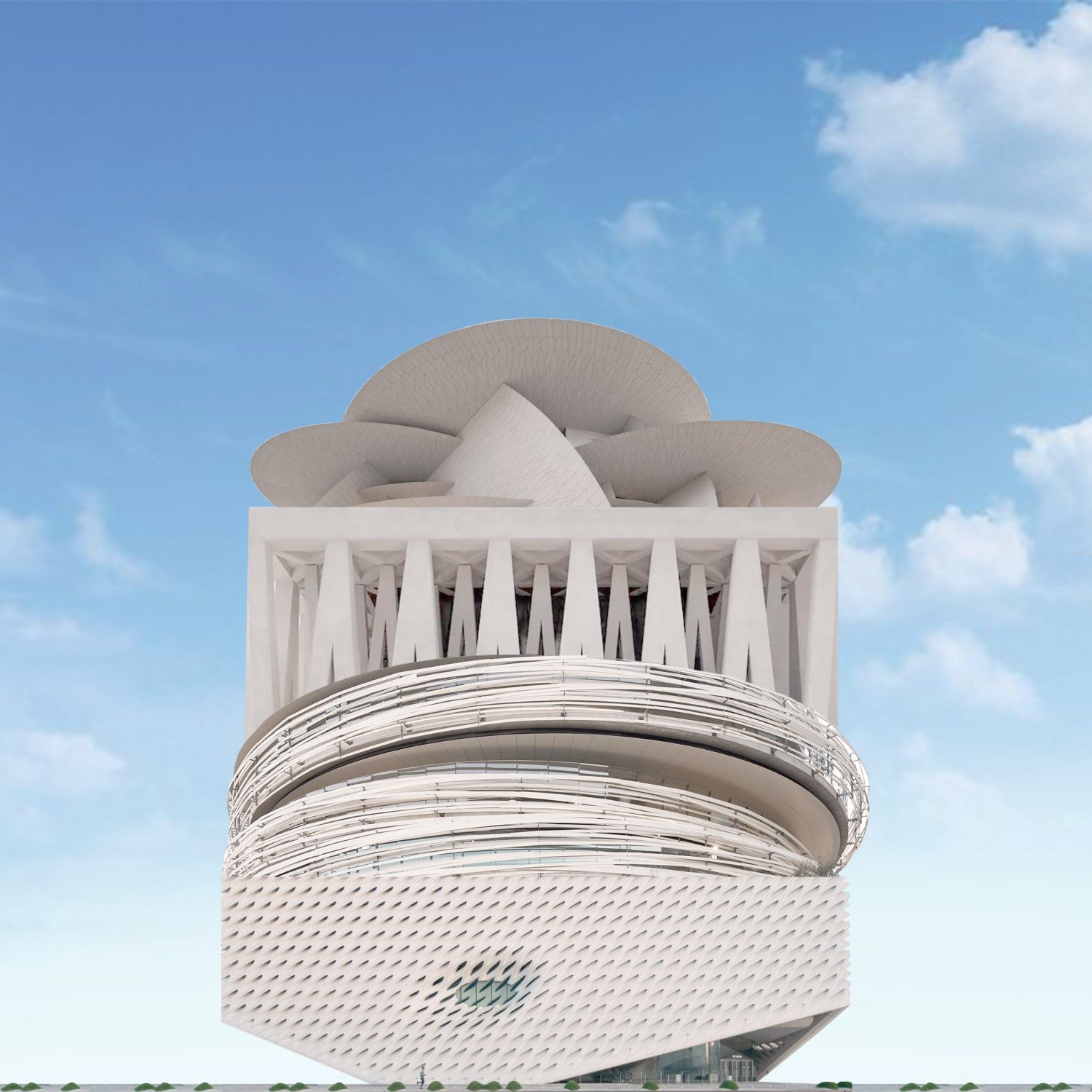The Analog Era of Architecture
Prior to the digital “big bang” of the 2000s, the analog era of architecture was defined by two main themes: post-modernism and deconstructivism. These themes created the prevailing milieu in which architects practised.
In postmodernism, it was believed that individual experience had become impoverished by the process of industrialisation. In response to the change in direction, the piloting concepts of modernism were replaced, from the abstract ideas of space and form with new notions of architecture that held a promise of liberation of the human experience.
At its most recognisable, postmodernism saw a recuperation of historical architecture as an inspiration for the development of modern design. Influential modernist and architectural theorist Christian Norberg Schulz, promoted the idea of “genius loci”, meaning the original source of the topography of a site should be instrumental in influencing the design response. In his theory of architectural tectonics, the leading historian of modernist architecture Kenneth Frampton focused attention on construction joints as the first signs of aesthetic surplus wherein architecture could be detected.
Sharing a pivot to history in the same timeline as postmodernism is the theme of deconstructivism which explored a host of metaphorical and literal design operations including montage, collage, automatic drawing, excavation, and layering.
For many of us, the way we think and talk about architecture is not a continuation of a historic tradition, but instead, a construct developed around the themes created in postmodernism and deconstructivism in the latter half of the 20th century.
The analog era continues to influence the way we think about and make architecture today. Modern notions such as “spirit of place”, “design narrative”, and “vernacular history” evidence the lasting influence of analog era thinking and practice. However, the dominance of this approach is now making way for the digitally devolved world of design.
The Evolution of Digital Technology
Design today takes place in a quickly evolving social and digital environment. The internet provides instant access to a multitude of voices and design influences. Any shape or form is buildable. Everything new is almost instantly old. The integration of generative artificial intelligence into the design process promises even greater speed and dexterity in realising design solutions.
We are in a supercharged, fertile environment that promises a proliferation of design creativity, and where a more varied and vibrant architectural landscape will prosper.
Today, there is acceptance for a diverse range of approaches to architectural design. However, is there evidence that the digital evolution has been successful in creating a corresponding blossoming of new design approaches?
Rather than enabling architects, it could be argued that the digital evolution has made it more difficult to develop new genres of architecture. Despite the rapid pace at which the global design landscape is evolving, it appears to be largely homogeneous. New form-making techniques such as helixes, whirlpools, juxtaposed boxes and biomorphism emerge regularly, to be rapidly replicated and assimilated again within the general flow.
Within architecture, the internet has proven itself to be a great tool for the dissemination of what may be happening around the world but has not been as immediately useful as an engagement tool for new approaches to architecture.
As a result, the orthodox approach has been replaced with the democratisation of design practice, establishing a more fragmented cohort of design thinkers. Perhaps this diversification of practice has had the unintended consequence of limiting our ability to develop strong new genres.
The digital evolution is also happening in a period of increasing industrialisation of the construction sector, within which the use of design in projects may have been broadened, but has also been commodified at the same time, constraining the scope that design is allowed to play.
It is still early in the digital evolution timeline. New approaches to architectural design will continue to develop from our reliance on the static image – which has been used to describe architecture for more than a century – rather than the experience. With digital technology like video, our focus has shifted to provide an alternative to how buildings are experienced in the real world. As designers, this enables us to describe the experiential content of our designs more powerfully, creating an enhanced dialogue about design approaches.
Design for the Times
It is more important than ever to remember that the design of architecture is a cultural pursuit. Its creation maintains a continuous record of the ingenuity of the human mind and the value of design in enhancing our lived experience. To move forward, we must commit to ideas that may not instantly be understood or embraced by others.
Although we live in a world that talks about design more than ever before, we need to sustain an inquisition of the dialogue and precepts that currently guide design outcomes. The preservation of heritage, for example, is universally lauded, but the expectations of how contemporary design should engage with its past continue to be fraught. Voices directing design are often not designers and sustained, overused referencing of the past risks creating an architectural echo chamber where iterations deliver self-referential architecture of ever-diminishing value. It is difficult to move forward while looking backward, so we need to make a place for new designs that will define our future heritage.
How do we know if our designs of today are of value? As a result of the digital evolution, the Pro-forma prescriptions for good architecture – as defined by the institutions – may no longer be a useful form of validation. Populist sources, from entertainment to social media have created a wellspring for instant abundant affirmation and acclaim. In a design world where everything is possible and anything is acceptable, how can we be assured that our pursuits have value and are not merely superficial?
The good news is that a more fluid understanding of architecture is consistent with the broader realms of other fields of human endeavours. Like art, music, or science, the journey is a continuing exploration, not a route to a destination. The criteria for the Nobel Prize for Chemistry outline this journey well: “the achievement should somehow open a door, or open our eyes, we will see things in a different way.”
So, designers, as you immerse yourselves into this sea of tumult, be comforted that you are on a journey entirely consistent with those adventurers that have come before. Move bravely forward, continue your own search, and challenge your thinking to see your designs in a different way.







